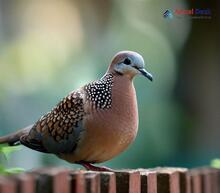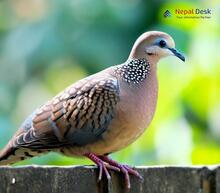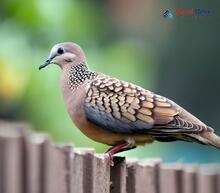Discovering the fascinating world of the Spilopelia genus is like diving into a treasure trove of natural history. These enchanting birds have captivated the hearts of nature lovers for centuries. As we delve into their origin, evolution, taxonomy, morphology, ecology, and presence in Nepal, your appreciation for these exquisite creatures will only continue to grow. Let us look at these various aspects in this article:
The Origin and Evolution of Spilopelia Genus
The Spilopelia genus belongs to the avian family Columbidae and is thought to have originated in the South Asian region around 10 million years ago. The diversification and evolution of various species within this genus can be attributed to adaptation to different habitats and ecological conditions. Two primary species within this genus include Spilopelia chinensis (spotted dove) and Spilopelia senegalensis (laughing dove).
Taxonomy: Classifying the Spilopelia Genus
The process of classifying species within this genus has been a challenge for ornithologists due to the subtle differences in morphology and plumage patterns. Recent molecular studies have played a significant role in resolving taxonomic uncertainties and have led researchers to recognize Spilopelia as a distinct genus.
Morphology: Examining the Physical Characteristics
Spilopelia species exhibit certain characteristics that make them stand out among other doves. They generally have small-to-medium sized bodies with striking black-and-white collar patches. Their wings are relatively short and rounded, while their tails are long and tapering. Plumage colors vary from pale brownish-gray to rich chestnut hues interspersed with black spots.
Ecology: Exploring the Habitat Preferences
Spilopelia doves thrive in diverse habitats spanning semi-arid regions, wetlands, grasslands, and subtropical forests. They are known for their ability to adapt to human-dominated landscapes and often inhabit agricultural fields, gardens, and urban areas. These doves are primarily granivorous, feeding on various seeds and grains. Insects may occasionally form part of their diet, especially during the breeding season.
Presence in Nepal: A Haven for Spilopelia Species
Nepal's diverse ecological zones provide a perfect refuge for Spilopelia doves. The spotted dove (Spilopelia chinensis) is quite common in the country, found in lowland Terai areas up to an elevation of 2000 meters. The laughing dove (Spilopelia senegalensis), on the other hand, is a rare sight in Nepal but can be encountered in its southernmost regions close to the Indian border. These charming birds have become an essential component of Nepal's rich avian biodiversity.
In conclusion, understanding the Spilopelia genus sheds light on the fascinating history of these stunning birds and their adaptive abilities that have allowed them to flourish across diverse ecosystems. From the radiant forests in Nepal to the busy streets of urban landscapes, these birds continue to captivate nature enthusiasts with their elegant beauty and melodious calls. The more we learn about them, the more our appreciation grows for their incredible resilience and adaptation to our ever-changing world.




